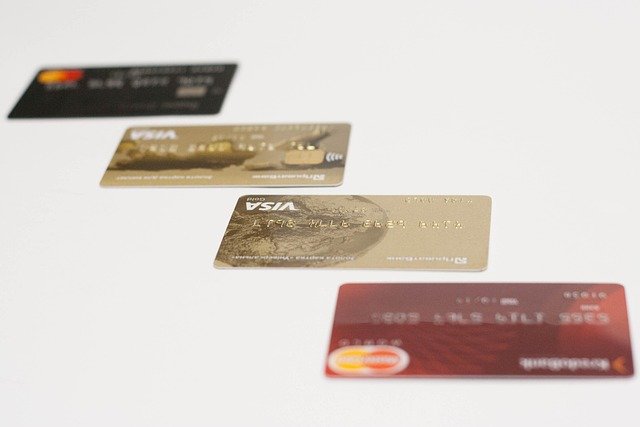Best Credit Card Options: Ways to Find the Right Card for Your Needs
Choosing the right credit card can significantly impact your financial life, offering benefits ranging from cashback rewards to travel perks. With numerous options available, it's crucial to understand how to navigate the credit card landscape and select a card that aligns with your specific needs and spending habits. This guide will help you explore various credit card categories, evaluate key factors, and understand common benefits to make an informed decision.

What are the main credit card categories to consider?
Credit cards come in several categories, each designed to cater to different financial needs and lifestyles. The main types include:
-
Rewards cards: These offer points, miles, or cashback on purchases.
-
Travel cards: Ideal for frequent travelers, providing perks like airport lounge access and travel insurance.
-
Balance transfer cards: Designed to help you consolidate and pay off existing credit card debt.
-
Low-interest cards: Offer lower-than-average APRs for carrying balances.
-
Secured cards: Require a deposit and help build or rebuild credit.
-
Student cards: Tailored for college students, often with lower credit requirements.
Understanding these categories is the first step in narrowing down your options and finding a card that suits your financial goals.
What key factors should you evaluate before choosing a card?
When selecting a credit card, consider the following factors:
-
Annual Percentage Rate (APR): This is the interest rate you’ll pay on carried balances.
-
Annual fee: Some cards charge yearly fees, which should be weighed against the benefits offered.
-
Credit score requirements: Different cards have varying credit score thresholds for approval.
-
Rewards structure: Look at earn rates and redemption options for rewards cards.
-
Sign-up bonus: Many cards offer introductory bonuses for new cardholders.
-
Foreign transaction fees: Important for those who travel or make international purchases.
Evaluating these factors will help you determine which card aligns best with your financial situation and spending habits.
What are common credit card benefits and how do they work?
Credit cards often come with a variety of benefits beyond their primary features. Some common benefits include:
-
Purchase protection: Covers eligible items against damage or theft for a limited time.
-
Extended warranty: Adds additional coverage to manufacturer warranties on purchases.
-
Travel insurance: May include trip cancellation, lost luggage, or rental car coverage.
-
Fraud protection: Safeguards against unauthorized transactions.
-
Credit score monitoring: Provides free access to your credit score and reports.
Understanding these benefits can help you maximize the value of your credit card and potentially save money on services you might otherwise pay for separately.
How can you practice responsible credit card use?
Responsible credit card use is essential for maintaining financial health and maximizing card benefits. Here are some strategies:
-
Pay your balance in full each month to avoid interest charges.
-
Set up automatic payments to ensure you never miss a due date.
-
Keep your credit utilization ratio below 30% of your credit limit.
-
Regularly review your statements for errors or fraudulent charges.
-
Avoid cash advances, which often come with high fees and interest rates.
-
Use your card for planned purchases rather than impulsive spending.
By following these practices, you can build a positive credit history and avoid falling into debt while enjoying the benefits of your credit card.
What reward and cashback program options are available?
Credit card reward programs vary widely, offering different types of rewards and redemption options. Some popular reward structures include:
-
Flat-rate cashback: A fixed percentage back on all purchases.
-
Tiered rewards: Higher earn rates in specific spending categories.
-
Rotating category bonuses: Increased rewards in categories that change quarterly.
-
Travel miles: Earn miles redeemable for flights, hotels, or other travel expenses.
-
Point systems: Accumulate points for various redemption options like gift cards, merchandise, or statement credits.
When exploring reward programs, consider your spending patterns and redemption preferences to find a card that offers the most value for your lifestyle.
How do you compare credit card offers effectively?
To make an informed decision, it’s important to compare credit card offers side by side. Here’s a comparison of some popular credit card options:
| Card Name | Annual Fee | Rewards Rate | Sign-Up Bonus | Key Benefits |
|---|---|---|---|---|
| Chase Freedom Unlimited | $0 | 1.5% cashback on all purchases | $200 after spending $500 in first 3 months | 0% intro APR on purchases for 15 months |
| Capital One Venture | $95 | 2x miles on all purchases | 60,000 miles after spending $3,000 in first 3 months | Global Entry/TSA PreCheck credit |
| Citi Double Cash | $0 | 2% cashback (1% when you buy, 1% when you pay) | None | 0% intro APR on balance transfers for 18 months |
| American Express Gold | $250 | 4x points at restaurants and U.S. supermarkets | 60,000 points after spending $4,000 in first 6 months | $120 annual dining credit |
Prices, rates, or cost estimates mentioned in this article are based on the latest available information but may change over time. Independent research is advised before making financial decisions.
When comparing offers, consider how each card’s features align with your spending habits and financial goals. Remember that the best card for you may not be the one with the highest rewards rate or the most impressive sign-up bonus, but rather the one that provides the most overall value based on your individual needs and circumstances.
In conclusion, finding the right credit card requires careful consideration of various factors, including card categories, key features, benefits, and reward programs. By understanding these elements and comparing offers effectively, you can select a credit card that not only meets your current financial needs but also supports your long-term financial goals.




